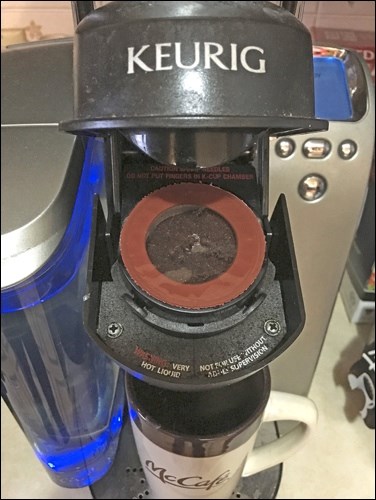As I type this, a steaming cup of coffee sits on a coaster on my desk, waiting, eagerly, for me to consume its warm brew.
Or perhaps it is I who am eager to drink that cup of brew.
Typically, this would not be a big deal, but it’s taken nearly two weeks to come to this point.
A few years ago my parents and late sister gave us a Keurig single-serve coffee maker, around the time that Keurigs were taking the Canadian market by storm. Since I work from home, making a pot of coffee has never made much sense, and besides that, in my life, I doubt I have ever made a perfect pot of coffee. But every time I load a pod into the Keurig, I get a perfect cup.
The Keurig rapidly became an integral part of the day in our family. Trips to Regina would occasionally be highlighted by a trip to a specialty coffee store with a wall of K-cups (the pods these single serve coffee makers use). Living across town from both Tim Hortons locations and a distance from McDonald's, whose McCafé coffee gives Tim’s a run for their money, the Keurig became the perfect solution. When McDonald's started offering their McCafé coffee in K-cups, it was magic.
We weren’t the only household to fall in love with Keurig coffee makers. They essentially conquered the market, much in the way VHS conquered Beta. Oh, sure, Tassimo tried to gain ground, but a little problem with pods exploding with scalding water didn’t help.
The world was at Keurig’s feet, and they threw it all away.
One of the reasons we would enjoy our trips to the Regina specialty coffee place was the opportunity to try almost any type of coffee in our machine. (And, yes, I know you can do that with beans, but that takes work). This was because the patent had expired on the K-cup, and all sorts of companies were making very, very good coffees in this form factor, McDonald's included.
Keurig machines, in a few short years, became ubiquitous. I know several people who have multiple machines.
But Keurig wasn’t getting licensing fees on this third-party coffee, so they came up with a solution. New coffee makers would be made to the Keurig 2.0 standard. While this offered some new capabilities, the key thing was the machine’s ability to discern if a K-cup was licensed by Keurig or not. If not, no coffee. Sorry.
And just like that, Keurig killed the golden goose. Snatching defeat from the jaws of victory, they royally ticked off their fan base when their new or replacement coffee-makers all of a sudden wouldn’t make their favourite coffees. I did a quick survey of the coffees we have in our house, and half, including the favourites, will not work in a Keurig 2.0. If a Keurig 2.0 was a VHS, it’s as if it was designed not to play your kids’ Disney movies. I would never buy a Keurig 2.0, and a lot of people share the same sentiment. So if their original Keurig dies, they are now looking at other options, including – gasp – making a normal pot of coffee the old-fashioned way.
This brings us to February, when our venerable Keurig started to choke and sputter with scale – a typical issue for these machines. We have run vinegar through it on numerous occasions, but it wasn’t doing the trick. Its water output was akin to a 79-year-old man in front of a urinal.
For over a week we ran vinegar through the machine, with little improvement. Then we bought the special Keurig descaling solution. It didn’t help either. A return to vinegar around day 10 finally started to bring the machine back to life. It took several more days of occasional cycles with fresh water to clear out the vinegar.
I would not normally go to such extremes to breathe life back into something as simple as a coffee maker. Typically, most people would just buy a new one. But these are the actions one will take to maintain their ability to make a good cup of coffee. That is a devoted customer and fan. I doubt I am alone.
Keurig has seen its sales plummet recently. It will soon be taken private – a move that often happens when a company needs to sort out its worsening situation without having to be accountable to the stock market. These things are happening as a direct result of its colossal Keurig 2.0 blunder. It will be a textbook case, studied in business schools for years to come.
In the meantime, I can still make third-party coffee in my old Keurig, fueling these weekly diatribes for at least a little while longer.
I’ll drink to that.
Brian Zinchuk is editor of Pipeline News. He can be reached at [email protected].
I can still make a cup of McDonalds coffee in my Keurig, for now. Photo by Brian Zinchuk




